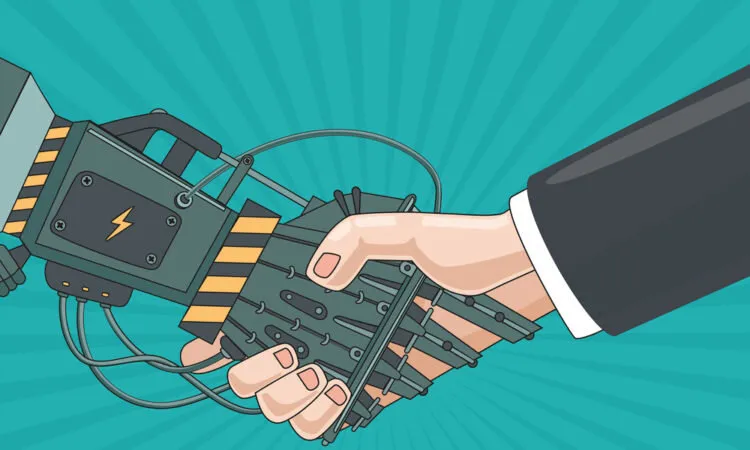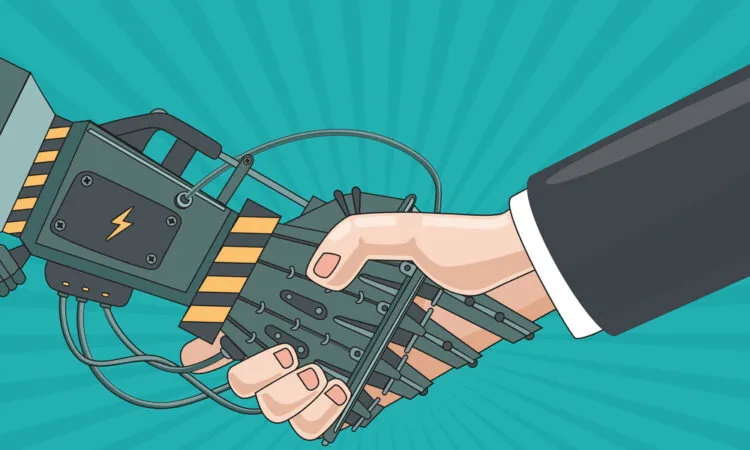The Future of Intelligent Automation: Human-Robot Collaboration & How to Achieve It
Blog: Cigen

The question that many of us are still bothered with is whether robots, software robots more precisely, will replace humans. The short answer is no, they won’t.
Even though RPA certainly has a pronounced effect on the job market, its capabilities do not allow it to entirely replace the need for a human workforce. Rather than putting bots instead of humans, robotic process automation is more likely to replace specific tasks, namely rules-based and routine ones, like data entry or order processing.
"Even though RPA certainly has a pronounced effect on the job market, its capabilities do not allow it to entirely replace the need for a human workforce."
CLICK TO TWEET
However, the human-specific traits such as creativity, complex problem solving, or communication, are simply not amenable to automation, not even to intelligent automation.
Consequently, instead of being replaced completely, the human workforce will have a different structure. This means that employees will be empowered to fill roles that allow them to be more creative and inventive, which will lead to increased job satisfaction.
Which, then, are the processes that are suitable for automation?
In the first place, those involving a high degree of manual, structured and repetitive input. Because of such features, these processes are also error-prone, which represents an additional reason to pass them on to software robots.
Activities with clear, template-driven, processing instructions are also among the ones that should be considered for automation. Being mature and stable, high volume and high frequency, and having a low rate of outcome variation, readable input types, and measurable savings (representable in terms of higher accuracy and overall productivity, or reduced processing times) are other process features that you might want to tick when selecting the tasks to be assigned to bots.
This infographic provides more relevant details on the topic. All in all, you can view robotic process automation as a functional tool that facilitates an optimal resource allocation, thereby leading to the best possible business outcomes.
Quick wins with RPA
Food companies may consider automating delivery confirmation in ERP, following the model of a CiGen client, an Australian FMCG food company. Software robots were trained to read, extract and rename delivery docket pdf files, to upload each document and match against sales order in netsuite cloud ERP, and to report any unmatched deliveries.
As a result, processing time was reduced by 95%, while process uptime and completion was 100%, with zero error rate, and instant ROI was achieved by sidelining the process. This meant up to date delivery status, prompt resolution of non-delivery, and faster remittance of open invoices.
In the facility management industry, automation of manufacturer rebate calculations can lead to faster and increased value of remittance rebates owed. This is what has been observed in the case of our client, a facilities management in Australia, where we deployed the UiPath platform with Studio and attended robots. The company experienced 40% increase in total rebates claimed with zero calculation errors, and only 3 months to ROI.
In the utilities sector, automation of asset management database updates can make companies better able to meet tighter regulatory compliance SLA's. Up to 85% of effort can be automated, which results in 100% data entry accuracy, 30% reduction of processing time, and a significant improvement of the capacity to account for business rules and processing pathways.
Roadmap towards efficient achievement of human-robot collaboration
Along the way, the role of the human workforce is to engage in critical thinking about optimal automation procedures and steps, which presumably leads to the attainment of business objectives most efficiently.
To put it very simply, the story looks like this: a human employee starts a task, enables an attended bot to continue, and then automatically triggers an unattended bot to finalize the activity. But the devil is in the details, so you should keep reading.
The natural beginning is the use of strongly controlled unattended automation for simple, routine processes.
The human employees’ part of the job is task and decision tree design. The repetitive nature of the tasks is then developed by reiteration. Further on, human intervention is called for only when process adjustments are necessary. Human - robot handoff is seamless: the bots are notified and can resume the process as soon as the employees fulfill the required modifications.
People and robots share responsibility when using attended automation.
The more complex tasks which are better suited for intelligent automation understood as RPA augmented with the ability to learn judgemental activities from observations of human processing requests, require human input within a command center for analysis, approval, and control purposes.
Human employees’ primary job is to design software robots’ workflows and decision trees, delegating and prioritising tasks according to contextual needs. They literally attend the bots by monitoring the ongoing processes, and by intervening when issues occur.
There are two attended automation methods at your disposal:
2.1. Robot Helper. In this approach, each employee is paired with one robot, which provides support for the repetitive, mundane, high-volume, template-driven activities that are part of their workload. It is particularly useful for small and medium businesses.
2.2. Captain and Crew. Either one or a small group of employees are assigned by their department to be in charge of a whole group of bots. This method is highly scalable.Human and robot tasks can be orchestrated by linking several processes via Long Running activities in UiPath Studio.
Bots’ part of the job is to order the tasks that are to be handled by humans. The main benefit is time efficiency: while human tasks are pending, robots can undertake new activities, and thus not a bit of time is wasted.
Monitoring the long-running workflows and keeping track of the processes executed by software robots in the extended workflow.
This is crucial for efficient end-to-end automation. Efficiency comes from the timely identification and resolution of ‘resource bottlenecks’, which allows for improved decision making. Spelling out who did what throughout the execution process, i.e., disentangling human-robot collaboration, warrants further workflow optimization.
Conclusion
The UiPath Apps (e.g., Tasks, UiPath Orchestrator Mobile App) facilitate authentic human-robot collaboration in the pursuit of your business objectives. End-to-end automation is a milestone towards scaling up to enterprise-wide RPA, and use of the UiPath Apps ensures the smooth inclusion of human employees into complex automated workflows.
You can count this as yet another argument in support of the claim that robots will not replace the human workforce. In fact, in the foreseeable future, the joined forces of RPA and AI under the umbrella of intelligent automation will not only drive the attainment of business objectives, but also contribute to moving people higher up the value chain.
